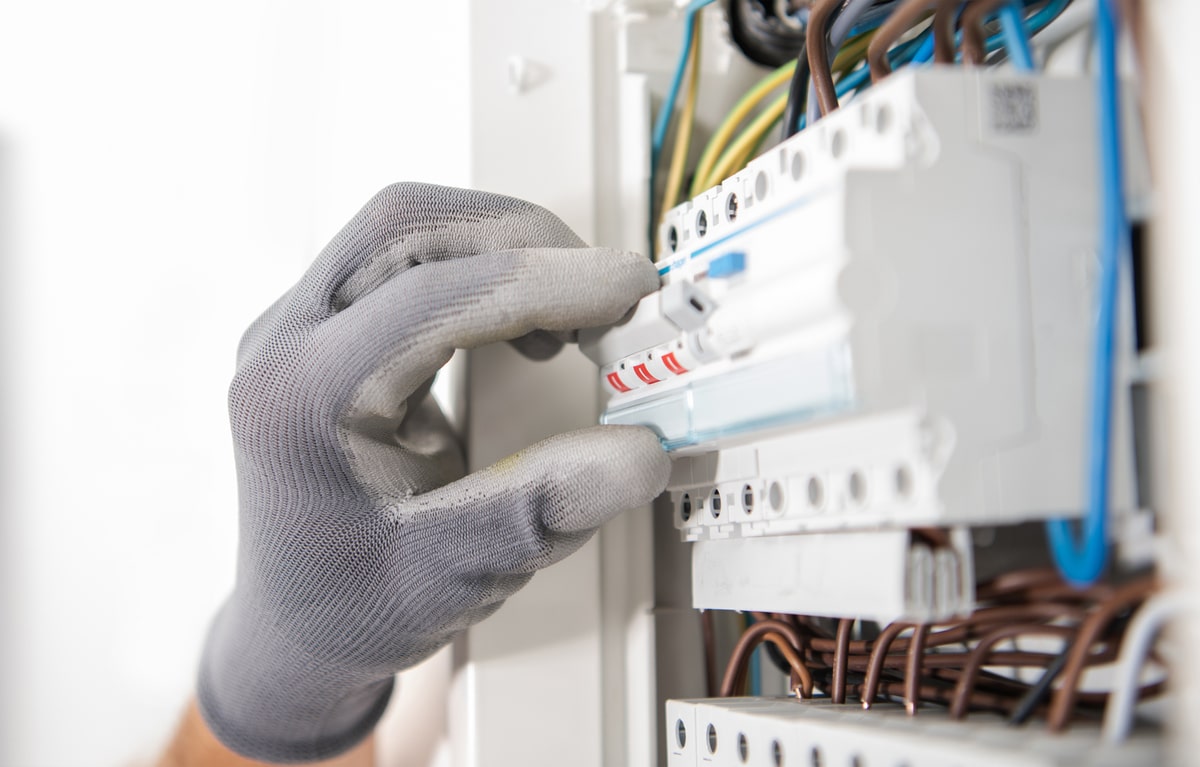Electrical safety is one of the most important considerations when it comes to your home. In fact, some 70 deaths occur in the UK annually due to faulty electrical sockets and equipment. Moreover, there are a further 350,000 injuries caused each year.
In this guide, we’ll discuss what electric tests are and when they are needed. That way, you can take the steps needed to keep you and your household safer.

What is an Electrical Test?
There are two primary forms of electrical testing in the UK: EICR and PAT testing. Whatever the case, an electrical test must be performed by a qualified electrician.
An Electrical Installation Condition Report or EICR serves the purpose of checking electrical installations to make sure they are safe and not at risk of causing electric shocks or posing a fire hazard.
Once the relevant tests are complete, you will receive your EICR report. This is ultimately a detailed assessment of your home’s fixed wiring and various electrical installations.
A PAT test or Portable Appliance Testing involves a professional examining your electrical appliances and equipment to make sure they are safe. It involves a combination of visual checks and electrical tests. The latter is important because not all safety defects can be spotted through visual analysis alone.
Electrical safety test costs can vary depending on the property in question and the number of appliances, sockets, etc., that need testing. Either way, you should never hold off on electrical safety testing when it is needed, either legally or for safety reasons.
Are Electrical Tests Legally Required?
If you are a landlord or own a house in multiple occupations (HMO), then yes, at the very least, an up-to-date EICR is required. Nonetheless, whether you are a landlord/have an HMO or not, it is still strongly recommended that you have your electrics tested every five years.
When it comes to PAT testing, unless you live in Scotland (for long-term rental properties), this is not a requirement even for landlords of those with an HMO. With that said, it is also recommended. Moreover, some local councils may request that it be performed should there be a relevant licensing scheme. So, to clarify, PAT testing is generally not required in England, Wales or Northern Ireland but is required in Scotland.
How Often to Test If You Are a Landlord/Have an HMO
For landlords or those with an HMO based in England, Wales or Scotland, it is a legal requirement to have an EICR undertaken on each of your rented properties once every five years or when there is a change of tenancy. Rules differ in Northern Ireland (e.g., an EICR is needed to sell a house).
These rules apply to each property. So if you have multiple properties that received their most recent EICRs at different times, when they will need fresh EICRs will naturally vary. If needs be, keep an accurate list of when EICRs were performed on each of your properties and when they are due.
Don’t forget to check your list occasionally. Also, you may want to add reminders via an app such as Google Calendar or otherwise so that you will be alerted when a given EICR is nearing its due date.
With that said, if you have any concerns for your property’s electrical safety, you should have a fresh EICR undertaken the right way. In that scenario, you should also have PAT testing performed right away if the electrician suggests it is also needed for safety reasons.
But what about PAT testing? If based in Scotland, any long-term rental properties require PAT testing of all electrical equipment in the property at least once every five years.
While PAT testing is not required elsewhere in the UK, it is still strongly recommended. How often you should have PAT testing is hard to say as it can depend on factors like the age of the property and the type of equipment you have. Recommendations range from once every year to once every five years.
If you have any doubts or concerns regarding electrical testing in general and the specifics related to your property or properties, you can always consult a qualified electrician.
How Often to Test If You Are Not a Landlord
Let’s start with an EICR. If you are neither a landlord nor have an HMO, while not legally required in most parts of the UK (it is required when selling a house in Northern Ireland), you should ideally have an EICR test of your property at least every five years.
Recommendations for PAT testing range from once every year to once every five years, although many of these recommendations are more oriented towards businesses.
While you are not required to have PAT testing, it is still very much advised. Moreover, if you have any concerns regarding your household’s electrical safety, you should have them tested as soon as possible. Do not use any electrics that you deem unsafe.
Sources:
https://www.makeurmove.co.uk/article/2224/Whats_The_Difference_Between_EICR_and_PAT





![Home Renovation Guide [2025]](/app/uploads/2021/04/design-hacks-1-378x300.jpg)
